When destroying any end-of-life data, whether it be paper, hard drives, solid state drives, or other forms of media, there are very strict guidelines and laws that address how classified, top secret, and controlled unclassified information (CUI) should be disposed and securely destroyed. These requirements are determined by the National Security Agency (NSA) and the National Institute of Standards and Technology (NIST).
For further context, the NSA mandates specific final particle sizes for top secret and/or classified data, regardless of the media form. They then evaluate and list end-of-life data destruction solutions that follow these mandates for destruction. (For a list of media destructions solutions evaluated and listed by the NSA, click here, and for more information what each data classification type really means, click here.)
While the federal government and government organizations are strict when it comes to how one should destroy end-of-life information, commercial companies and industries like healthcare, finance, banking, and more, are less stringent with their destruction instructions, with some left open to interpretation.
Enter the DIN Standards. Also known as Deutsches Institut für Normung, DIN originated at the German Institute for Standardization in 1917 as a non-government organization that serves as the national standard when it comes to improving the rationalization, safety, environmental protection, and quality assurance between the government and the public. DIN is not often mandated but their guidelines serve as a widely accepted global standard while providing clarity to otherwise vague end-of-life information destruction mandates.
DIN 66399 standards specifically provide end-of-life destruction particle size guidelines for information that resides on a wide range of media – including paper – and that specifies protection categories. (You can find more in-depth information about DIN standards here.)
Even as we get further and further into the Digital Age, there is still such a high demand for paper. Some may say that paper is dead, but we know that paper will never really be dead. While the industries I listed above are not holding government secrets, they still store a lot of their sensitive and unclassified information on paper; information that needs to be securely destroyed or could result in severe consequences if it lands in the wrong hands.
Now that you have all of this background information, let’s get into why you’re here – what constitutes as a secure paper shred size?
Seven Specific Security Levels
P = Paper media requirements
Protection Category | Media Paper | Security Level | Security Level Particle Size Requirement |
Class 1 | P | 1 | 12mm strips or maximum particle surface area of 2,000mm² |
Class 1 | P | 2 | 6mm strips or maximum particle surface area of 800mm² |
Class 1 | P | 3 | 2mm strips or maximum particle surface area of 320mm² |
Class 2 | P | 4 | Maximum cross-cut particle surface area of 160mm² with a maximum strip width of 6mm = 6 x 25mm |
Class 2 | P | 5 | Maximum cross-cut particle surface area of 30mm² with a maximum strip width of 2mm = 2 x 15mm |
Class 3 | P | 6 | Maximum cross-cut particle surface area of 10mm² with a maximum strip width of 1mm = 1 x 10mm |
Class 3 | P | 7 | Maximum cross-cut particle surface area of 5mm² with a maximum strip width of 1mm = 1 x 5mm |
Here’s what each of these security levels look like:
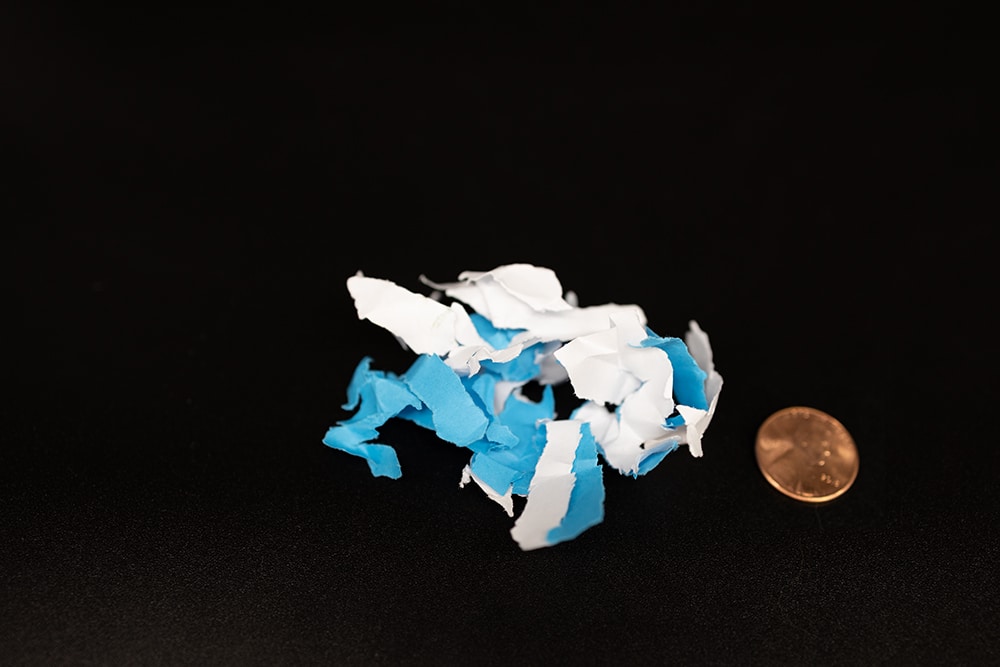
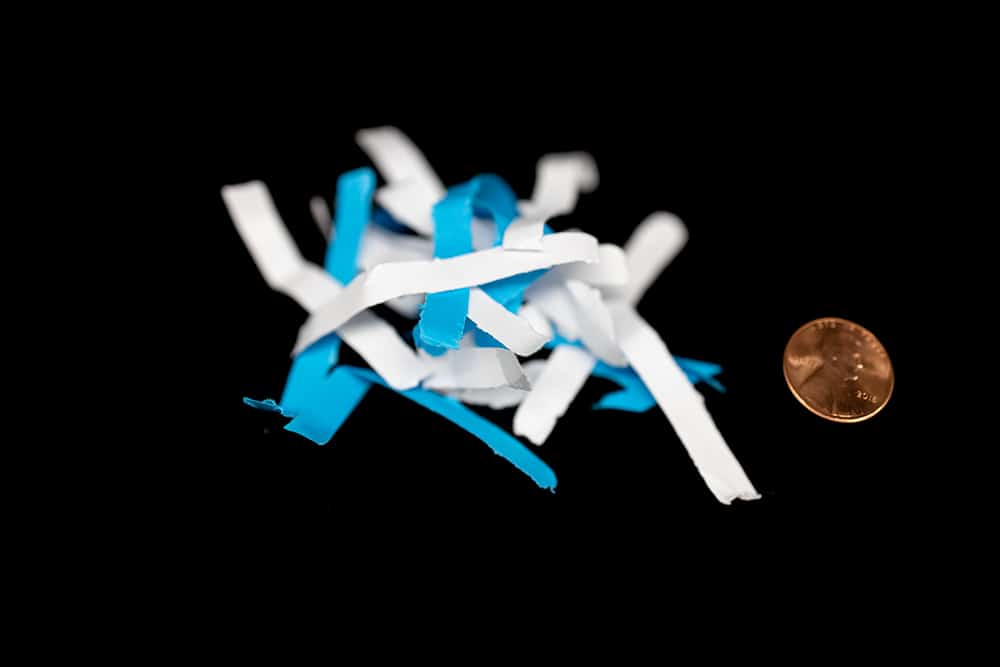
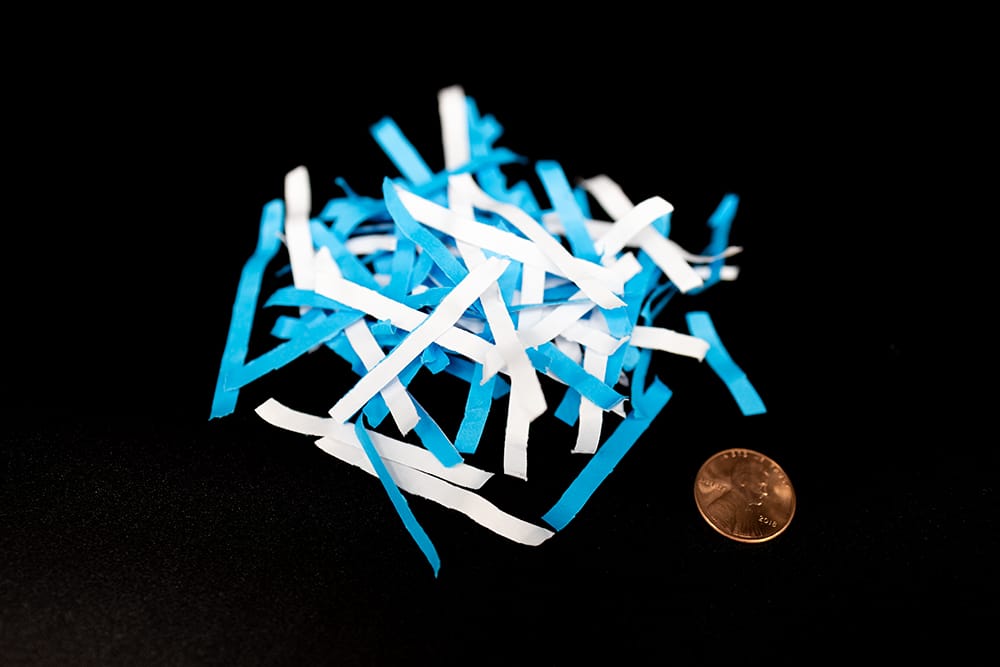
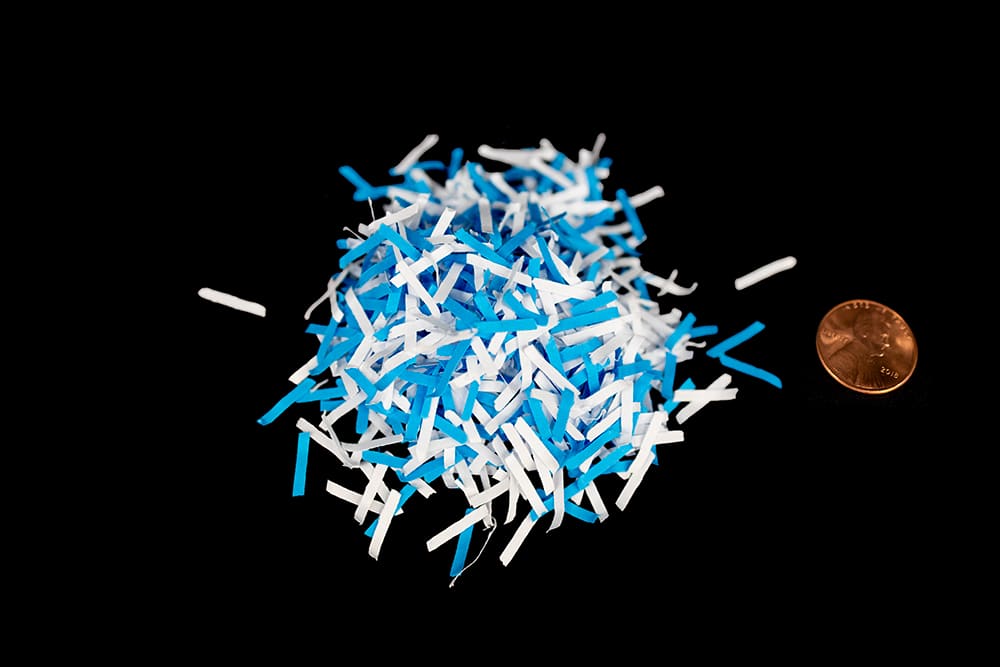
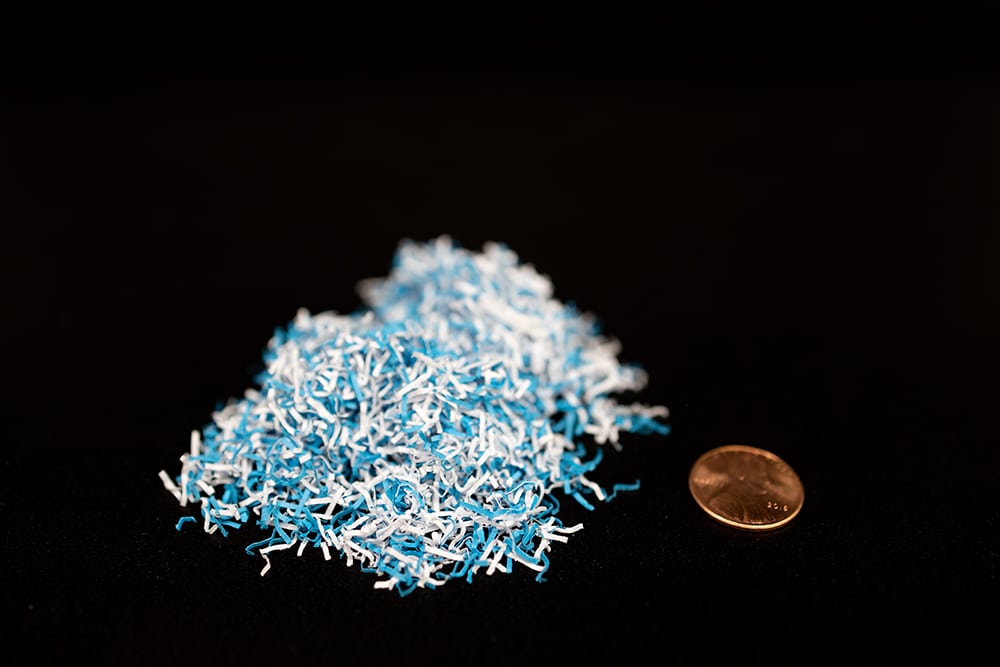
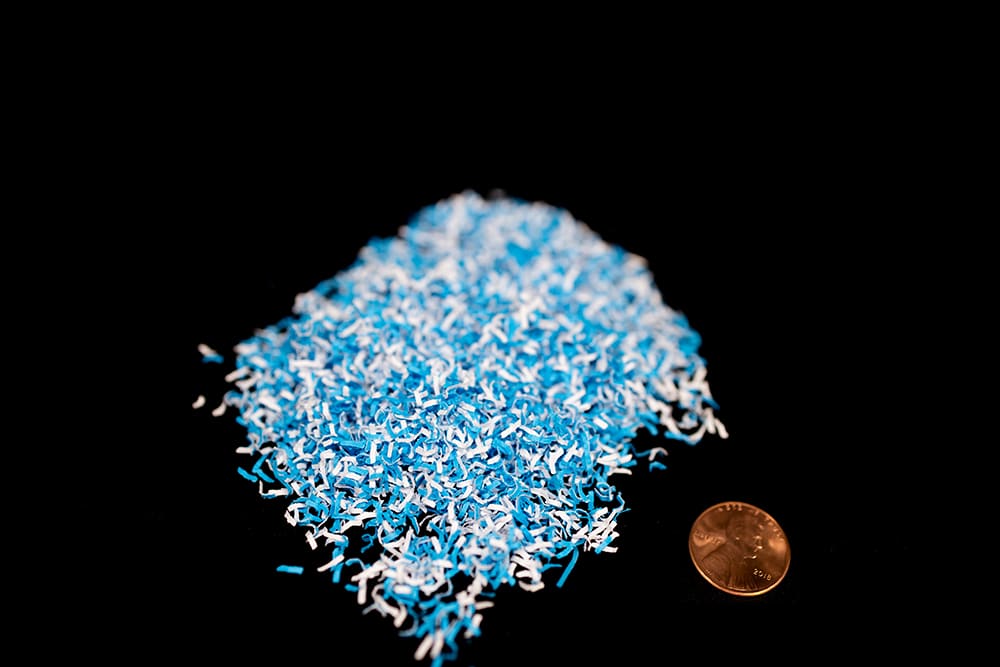
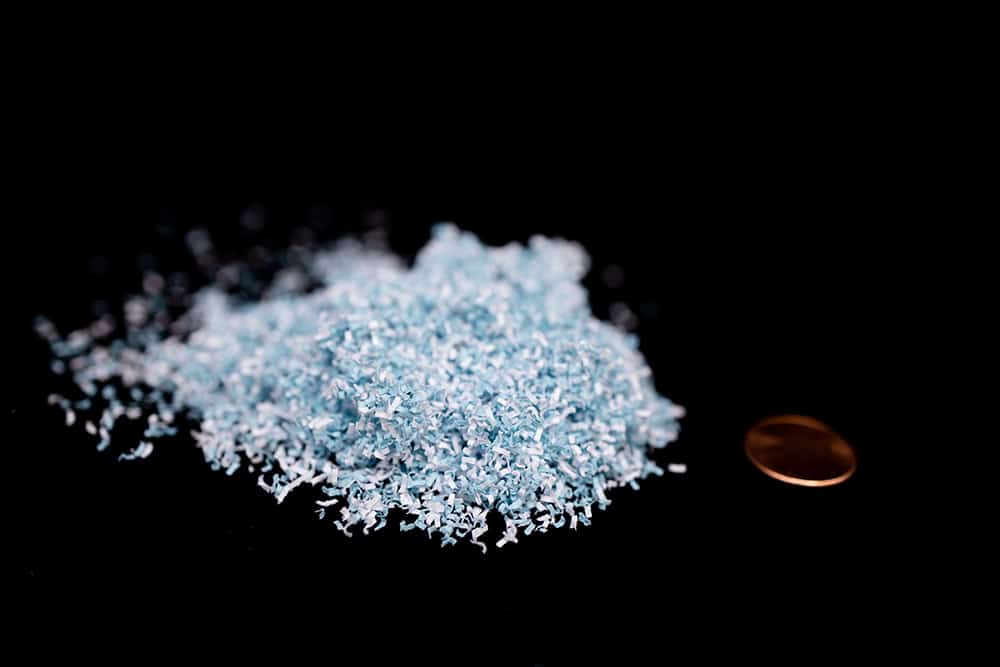
As you can tell based on the table and photos above, P7 is the smallest, most secure particle size (aside from the 0.8mm x 2.5mm particle from our Model 344, which is half the size mandated by the NSA for classified paper). Essentially, the smaller the particle, the harder it is to put back together.
Why would you want to put a bunch of paper shreds back together? To get top secret information, of course!
Allow us to introduce the DARPA Shredder Challenge. The challenge was created by a research and development agency of the U.S. Department of Defense back in 2011. The DoD invited top computer scientists and puzzle enthusiasts to essentially reconstruct paper shreds for a grand prize.
The challenge ended when the winning team, who went by the name, “All Your Shreds Belong to US”, created an algorithm that automatically reconstructed the 10,000 pieces of paper based on various physical aspects of the shred, such as shred angle, shred size, and paper marks. Other teams used strategies ranging from crowdsourced-style methods to relying heavily on manual reconstruction.
When it comes to end-of-life data destruction, it is always best to err on the side of caution. By opting for in-house data destruction methods, you and your company or agency are making the most cost-effective, safe, and secure decision. At SEM we have an array of high-quality NSA listed/CUI and unclassified paper shredders to meet any regulation and mandate, ensuring all of your end-of-life paper stays end-of-life. Any one of our exceptional sales team members are more than happy to help answer any questions you may have and help determine which machine will best meet your destruction needs.

